Imagine this: you are a food delivery mobile app company that wants to gather customer feedback to understand what people feel about you & competitors and wants to analyze that information for actionable insights.
It has traditionally been a process reserved for skilled data scientists, given that gathering such information requires complex programming skills and an understanding of Natural Language Processing.
Not anymore! It’s so simple that one can get such a report in a few minutes saving lots of time and energy by using a tool like Obsei (Observe, Analyze and Inform) which is an open-source tool.
Introduction of Obsei
Obsei is an open-source low code AI-powered workflow automation tool. It collects unstructured data like customer feedback from various sources (social media post, google reviews, app stores reviews, and news), then with the help from using natural language processing extract structured information (sentiment, topic identification, entity extraction, etc) and provide structured data in analyst desired format like CSV, Pandas DataFrames, etc.
Check out their GitHub repo for examples, notebooks, and a simple UI demo to learn more about usages.
Comparative feedback analysis of Swiggy and Zomato
As a part of my project-based learning, I took up a task to compare & analyze the sentiments of two competitive app-based food delivery brands: Swiggy and Zomato.
This project involved two steps:
- The first step was to collect and organize the text data by category/features (Price, Ease of Use, Delivery, Offers, etc.), then clean the review text, perform sentiment analysis on each text within the category and get the output in Panda data frame or CSV to analyze it further.
- The second one was to visualize the data to get actionable insights.
Step 1: Collect and organize feedback data
Obsei helped me to sort out the first and most important part of collecting the data. Just by putting basic details of an app like app id, location, and categories on which data needs to be segmented. we can easily scrap the review data from Google Play Store and Apple App Store and save it in drive in CSV format.
I zeroed on six categories that I feel are important for any food delivery app that are order placement, payment options, real-time order tracking, rewards & discounts, social media integration, and user interface for topic classification. 1400 reviews (700 each) from both the Play Store and App Store were collected for analysis.
The following workflow clearly depicts the tasks involved.

- Observe: App Store’s / Play Store’s app reviews
- Pre-process: Clean review text properly
- Analyze: Classify review text within the given category list
- Inform: Provide all data in Pandas DataFrame
- Store: Store data in Google Drive in CSV format
Refer to Google Colab links: Play Store and App Store for the source code to generate the CSV file containing review data.
Part 2: Data visualization to get the actionable insights
Now the second part was to visualize the data and get actionable insight by doing a comparative analysis of the data fetched. While any BI tool can be used for data analysis but for my project-based learning I used python based libraries like wordcloud, matplotlib, and seaborn to generate visualization for data analysis.
Data analysis was performed using various distribution graphs (like bar graphs, pie charts, area graphs, box plots, and heatmaps), along with text analysis using word cloud and word frequency graphs.
Data analysis and Actionable insights
I started the analysis by adding some more features to the dataset. like the length of the review, the word count of each review, and adding the Polarity and sentiments.
Polarity shows the sentiment of each text. The Polarity value ranges from -1 to 1 where -1 represents the negative sentiment, and 1 represents the positive sentiment.
Rating distributions analysis
I started with the distribution of the word count, review Length, and polarity of the data set.
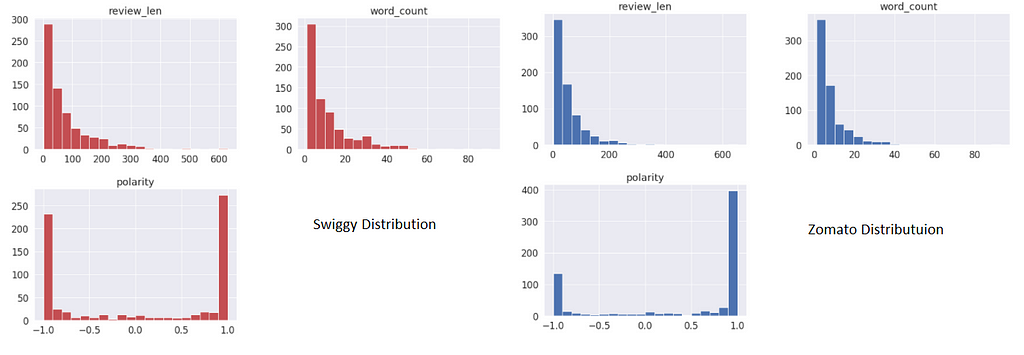
The distribution of review length and the word counts are similar as expected for both the brands. Most 1-star reviews are short in length. Polarity seems to be right-skewed for both brands, but the polarity is highly skewed towards the right. That means maximum reviews have a positive sentiment. It was clearer when we visualize the data using a pie chart and rating distribution chart.
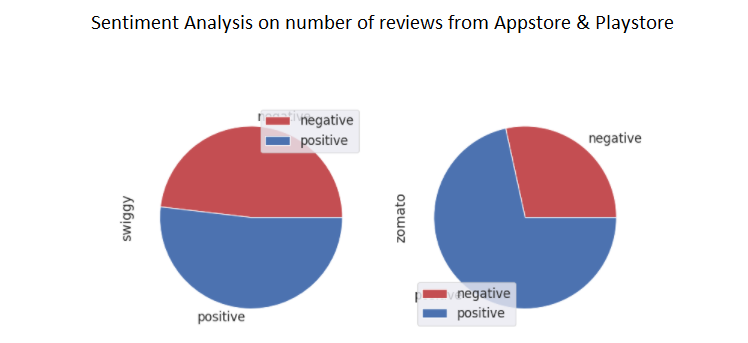
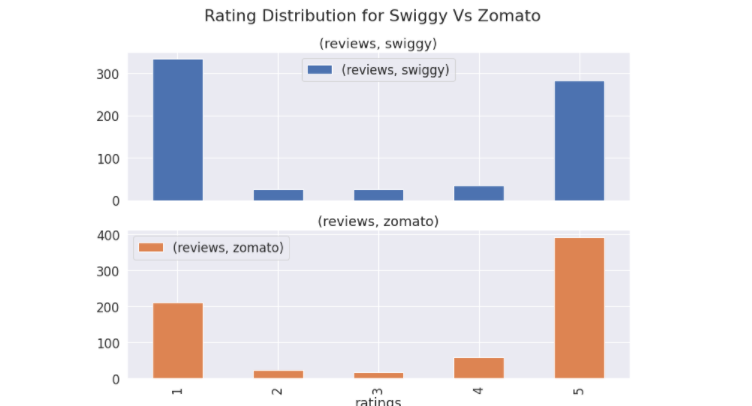
Review length vs star rating analysis
I tried to see if the review length changes with a rating and whether sentiments have any relation to the length of Reviews.
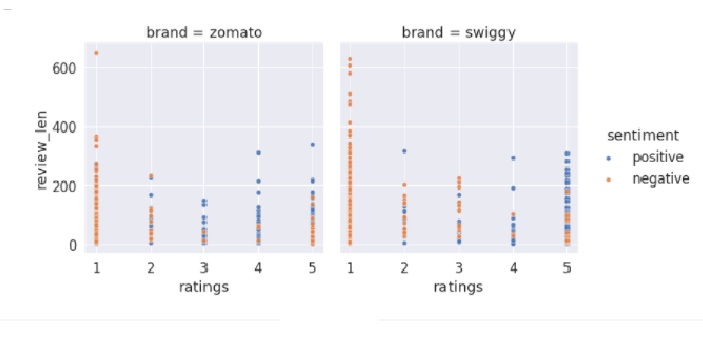

It was interesting to see that when the rating was 5, the review length significantly went down. So, when customers were happy, they did not write too much!
Polarity vs star rating analysis
I wanted to check if the polarity goes with the rating. Mean polarity keeps going up with the higher rating in case of but the same is not true for Swiggy. There are a lot of outliers in 1-star and 5-star ratings though.
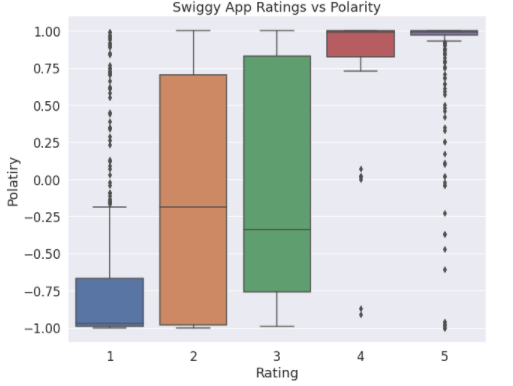
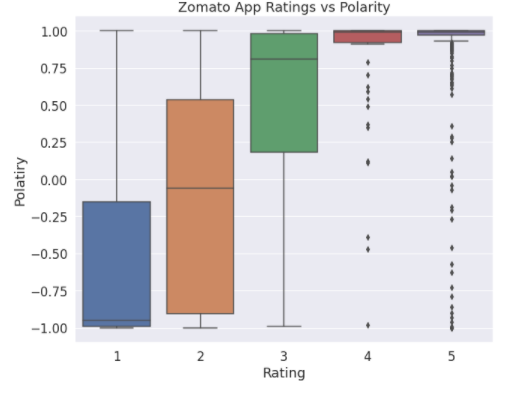
Features-wise sentiment analysis
Analyzing the sentiments of user conversations can give us an idea about overall brand perceptions. But, to dig deeper, it is important to visualize the category-wise data.
Based on the dataset, User Interface, ease of order placement and flexible payment options are the most critical factor for any food-based delivery app.
Rewards and discounts and real-time order tracking make consumers happy.
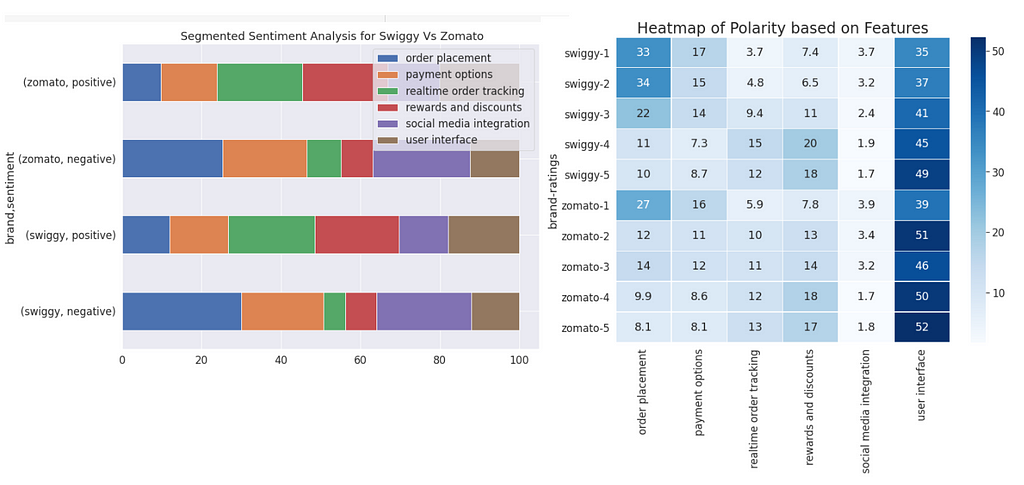
Sentiment-wise text analysis
Word cloud is one of the most common and beautiful visualizations for text data to plot the frequency of words. The bigger the words that appeared more frequently in the text.
Service, Delivery & Time are the most common words that are used with both positive & negative sentiments in food delivery apps.
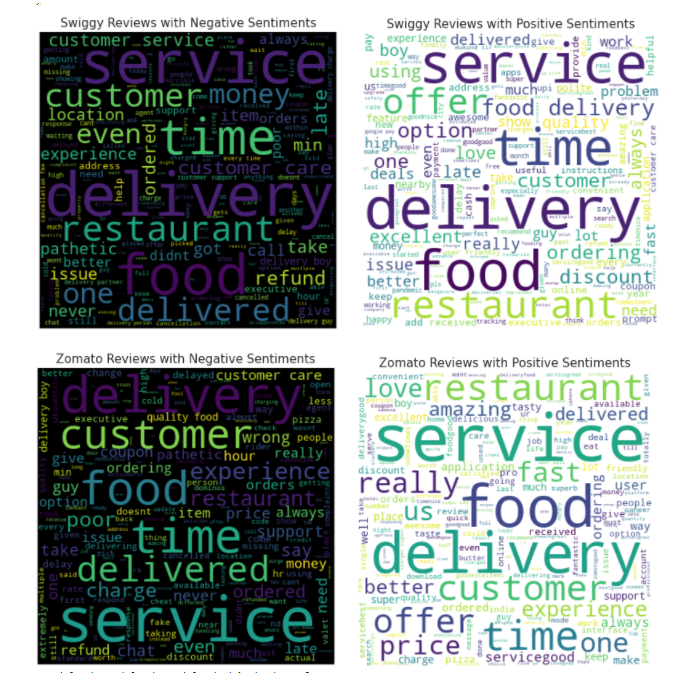
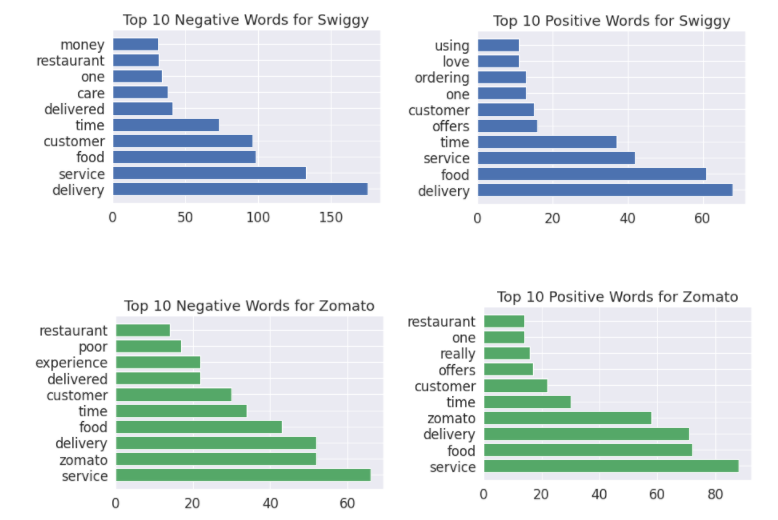
Finally
I tried to present some great ways to understand or extract the information you may choose whatever feels suitable for you. Hope you will try all this on your own dataset and do some cool analysis.
My sincere thanks to Lalit Pagaria for building Obsei, a wonderful analytical tool, that helped me to ideate and formulate this analysis.
Many thanks as well to Sanjay Bharkatiya who provided extensive insight and support throughout the editorial process.
Feel free to follow me on Medium and LinkedIn.
· · ·
AI based Comparative Customer Feedback Analysis Using Obsei was originally published in Analytics Vidhya on Medium, where people are continuing the conversation by highlighting and responding to this story. Republishing (with minor editing) here with permission from the original author: Reena Bapna.
 Made with Superblog
Made with Superblog